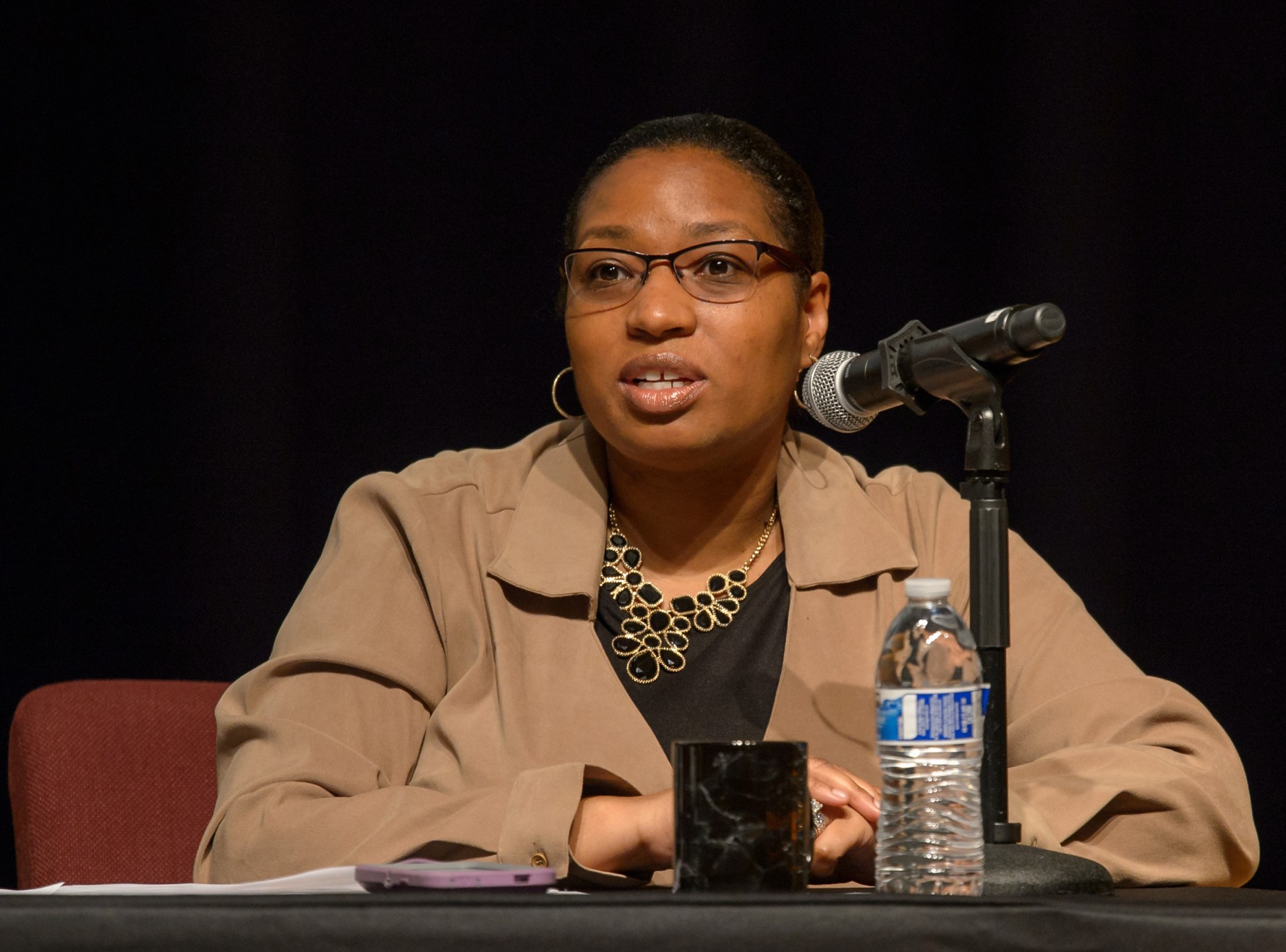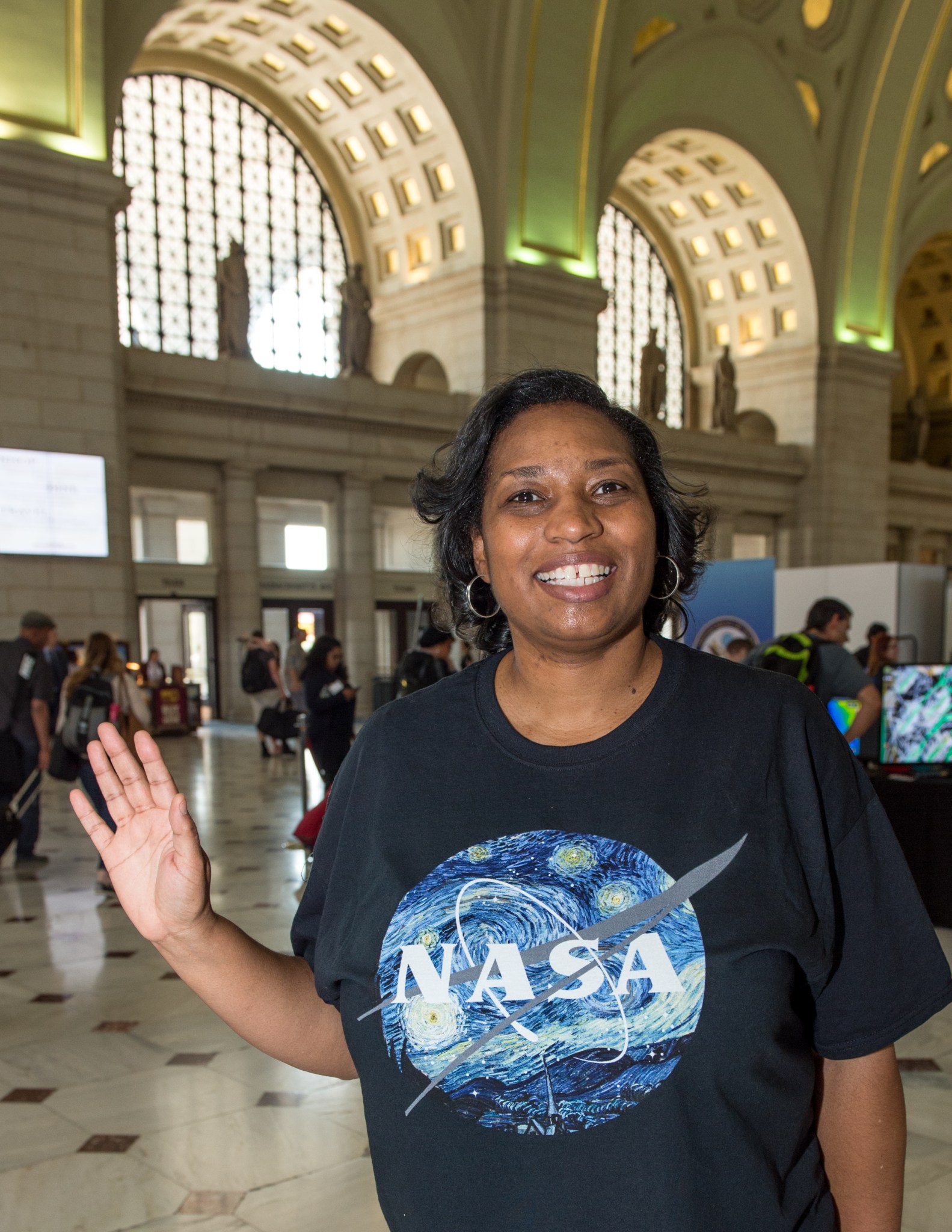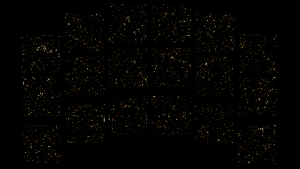
Name: Trena Ferrell
Title: Education and Public Outreach Lead for the Earth Science Division
Formal Job Classification: Environmental Scientist
Organization: Earth Science Division, Earth Science Directorate (Code 610)
What do you do and what is most interesting about your role here at Goddard?
I interface with the public and educational institutions to share all the great research that our scientists and engineers are doing at NASA. I also support large-scale public events around the country and interact with citizen scientists.
I’ve always been passionate about science and education, so now I get to mesh my two passions together.
What is your educational background?
I have a Bachelor of Science in premedicine from Albright College in Redding, Pennsylvania; a master’s in developmental biology from American University in Washington, D.C.; and a Ph.D. in environmental science from Oklahoma State University in Stillwater.
How did you come to work for Goddard?
Initially I wanted to be a doctor, but I started teaching science at the middle school and high school at the Maya Angelou Public Charter School in Washington, D.C., and found that I loved teaching. (I got to meet her once, and she was phenomenal!)
Around 2000, I asked NASA to send a speaker, Dr. Octavia Tripp. Through her suggestion, I became an aerospace education specialist and then the NASA Explorer Schools Workshop Coordinator at NASA Headquarters in Washington, D.C. Around 2005, I became Goddard’s education representative for Maryland. In 2015, I became a public affairs specialist for Goddard’s Office of Communications. In 2016, I started in my current position.
What is your message to students?
I work with students from kindergarten through college. I want them to reach for the stars and realize that they can be scientists or engineers who work at NASA. I want them to know that NASA also offers a plethora of other careers, which I also want them to consider.
What is your message for citizen scientists?
I tell them that they are an important piece of the NASA puzzle who help us with our scientific efforts. For example, the Globe Observer App can be downloaded to a smart phone. Using this app, they can take photos of clouds, land cover, tree height, and mosquito larvae. They can also take tree height measurements.
What was your favorite large-scale event?
I was one of the co-leads for Goddard’s open house in 2015, my first large-scale project of this magnitude. Over 20,000 people attended. We had so many people that the Greenbelt Metro Station had to close. People even came from other states.
I loved seeing all our hard work pay off and how excited all the people were to be at Goddard. I especially enjoyed watching the kids interreacting with our scientists and engineers, asking questions. They are our future.

When did you feel like you were part of the NASA family?
While working on our 2015 open house, I worked with an amazing team. Kudos to the Office of Communications; especially to Michelle Jones, Leslee Scott, Deanna Trask, and Amy Grigg.
This event made me realize that NASA really is a family. Everyone works together for a positive outcome; a shared, common interest. If you need help, someone shows up to help you without asking. And you do the same for others who need help.
World-class scientist and engineers willingly give their time to tell the world about their expertise. They are good with people of all ages and are always particularly kind with kids, our next generation of explorers.
How has working at Goddard changed your life?
While at Goddard, I met my husband Mark Branch, a Goddard engineer. He was our subject matter expert for a student outreach event I organized. We married two years after meeting, in 2010. Someday I’d like to write a book about all the couples who met at Goddard.
I sincerely thank everyone at Goddard who has touched my life and helped me!
Who has guided you the most in life?
My parents did everything they could to give my sister and me the best possible opportunities. They told us to dream big and to do big things. They are always there for us. They are amazing people!
I adore my family. I love that I have added new family members from NASA.
What do you do to relax?
I attended a French high school for my junior year and became an admirer of French culture and cuisine. I like to cook, including French food. I also love traveling. I enjoy reading fiction to relax.
Conversations With Goddard is a collection of Q&A profiles highlighting the breadth and depth of NASA’s Goddard Space Flight Center’s talented and diverse workforce. The Conversations have been published twice a month on average since May 2011. Read past editions on Goddard’s “Our People” webpage.
By Elizabeth M. Jarrell
NASA’s Goddard Space Flight Center, Greenbelt, Md.

































